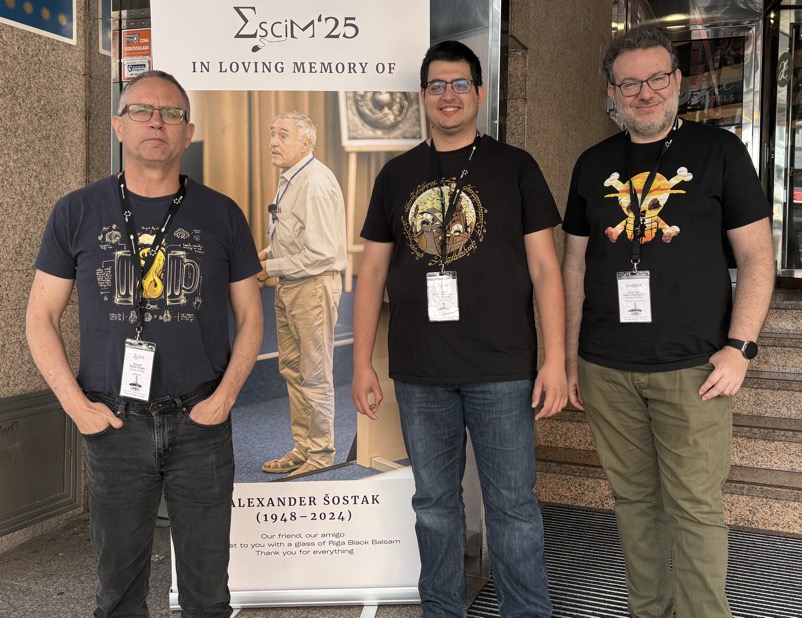wp2
Participation ICCS 2023
15/09/23/09:59 Filed in: Conference participation | Chairing
28th Int Conf on Conceptual Structures, ICCS, Berlin, Germany, Sep 11-13, 2023
This edition has been organised by Manuel Ojeda-Aciego as Program co-chair (in the picture with Inma P. Cabrera and Pablo Cordero)

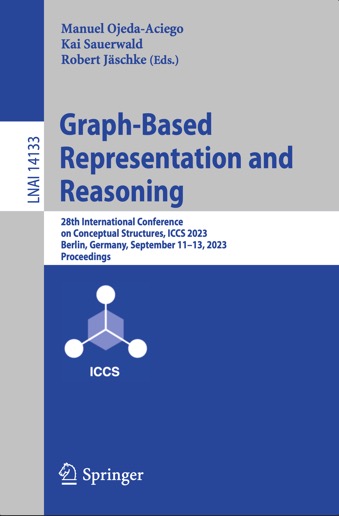
Domingo López-Rodríguez participated with an invited tutorial on the R package fcaR.
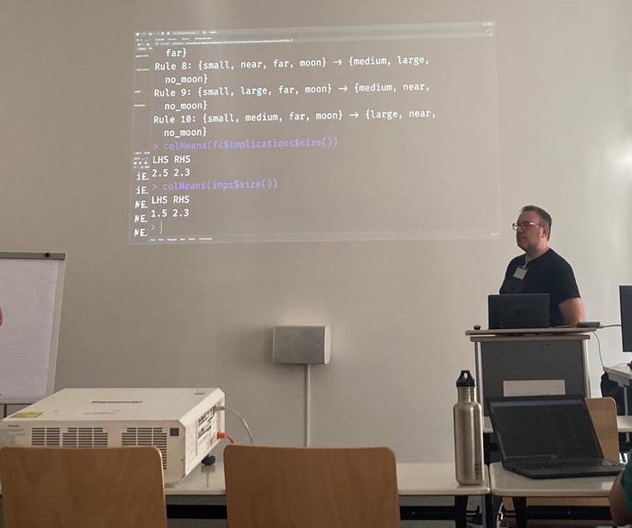
The two accepted papers were presented by Manuel Ojeda Hernández:
- Aggregation Functions and Extent Structure Preservation in Formal Concept Analysis
- On Pseudointents in Fuzzy Formal Concept Analysis
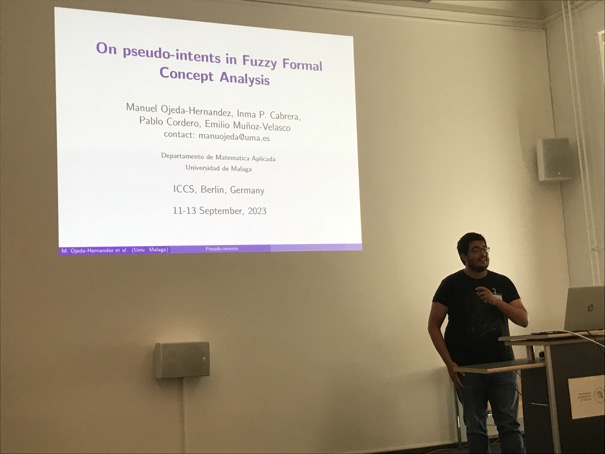
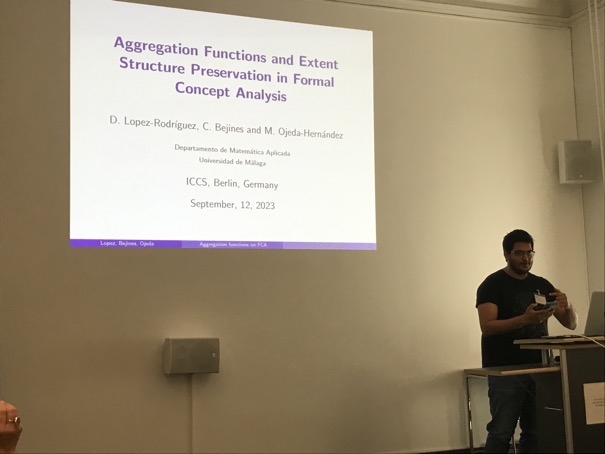
Participation FSTA 2024
05/02/24/13:20 Filed in: Conference participation
Fuzzy Sets Theory and Applications, Liptovský Ján, Slovak Republic, Jan 28-Feb 2 2024
We presented two works "An FCA-based approach to RDF graphs" (presented by Manuel Ojeda-Aciego) and "Close-by-One strategy for computing the fuzzy concept lattice" (presented by Manuel Ojeda-Hernández).
A nice workshop, plenty of scientific and cultural activities, in which we found some time to work on forthcoming research topics with our collaborator Irina Perfilieva.
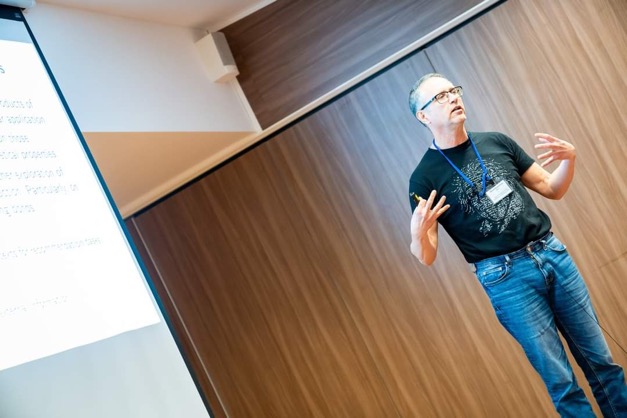
Journal paper accepted: INS, KYB
01/09/23/12:17 Filed in: Journal papers
O. Krídlo, D. López-Rodríguez, L. Antoni, P. Eliaš, S. Krajči, and M. Ojeda-Aciego. Connecting concept lattices with bonds induced by external information. Information Sciences, 648:Article 119498, 2023.
ABSTRACT In Formal Concept Analysis (FCA), L-bonds represent relationships between L-formal contexts. Choosing the appropriate bond between L-fuzzy formal contexts is an important challenge for its application in recommendation tasks. Recent work introduced two constructions of bonds, given by direct products of two L-fuzzy formal contexts, and showed their usefulness in a particular application. In this paper, we present further theoretical and experimental results on these constructions; in particular, we provide extended interpretations of both rigorous and benevolent concept-forming operators, introduce new theoretical properties of the proposed bonds to connect two concept lattices given external information, and finally present the experimental study of the upper bounds.
C. Bejines. Aggregation of fuzzy vector spaces. Kybernetika 59(5):752-767, 2023.
ABSTRACT This paper contributes to the ongoing investigation of aggregating algebraic structures, with a particular focus on the aggregation of fuzzy vector spaces. The article is structured into three distinct parts, each addressing a specific aspect of the aggregation process. The first part of the paper explores the self-aggregation of fuzzy vector subspaces. It delves into the intricacies of combining and consolidating fuzzy vector subspaces to obtain a coherent and comprehensive outcome. The second part of the paper centers around the aggregation of similar fuzzy vector subspaces, specifically those belonging to the same equivalence class. This section scrutinizes the challenges and considerations involved in aggregating fuzzy vector subspaces with shared characteristics. The third part of the paper takes a broad perspective, providing an analysis of the aggregation problem of fuzzy vector subspaces from a general standpoint. It examines the fundamental issues, principles, and implications associated with aggregating fuzzy vector subspaces in a comprehensive manner. By elucidating these three key aspects, this paper contributes to the advancement of knowledge in the field of aggregation of algebraic structures, shedding light on the specific domain of fuzzy vector spaces.
Journal paper accepted: NEUCOMP
07/01/25/12:00 Filed in: Journal paper
I. Perfilieva, N. Madrid, M. Ojeda-Aciego, P. Artiemjew, A. Niemczynowicz. A Critical Analysis of the Theoretical Framework of the Extreme Learning Machine. Neurocomputing, 2025
ABSTRACT Despite several successful applications of the Extreme Learning Machine (ELM) as a new neural network training method that combines random selection with deterministic computation, we show that some fundamental principles of ELM lack a rigorous mathematical basis. In particular, we refute the proofs of two fundamental claims and construct datasets that serve as counterexamples to the ELM algorithm. Finally, we provide alternative claims to the basic principles that justify the effectiveness of ELM in some theoretical cases.
Conference papers accepted: ESCIM
06/02/24/10:27 Filed in: Conference papers
I. Perfilieva, N. Madrid, M. Ojeda-Aciego, P. Artiemjew, A. Niemczynowicz. Extreme Learning Machine as a New Learning Paradigm: Pros and Cons. Eur. Symp. on Computational Intelligence and Mathematics, ESCIM, 2024.
ABSTRACT We analyze the validity of the Extreme Learning Machine principles proposed as a new learning methodology for Single Layer Feedforward Neural Networks. We show that despite the empirical success of ELM, its theoretical platform does not have a rigorous mathematical justification. To do this, we show that two main statements in its seminal paper do not have correct proofs and are in fact incorrect. Moreover, we create a dataset that provides a counterexample to the theoretical assertions done about the ELM learning algorithm.
F. Pérez-Gámez, C. Bejines, P. Cordero, D. López-Rodríguez, M. Ojeda-Hernández. Inheritance of completeness between systems of strong and weak implications. Eur. Symp. on Computational Intelligence and Mathematics, ESCIM, 2024.
ABSTRACT The study of unknown information in formal contexts can be done from two extremely different points of view: working just with the information available at the moment, or exploring all the different values that the unknown information can take.
From these two perspectives, we obtain two kinds of attribute implications: the weak ones which are the attribute implications that hold with the current amount of information, and the strong ones which will also hold under any update of the context. We study whether, given a complete system of weak implications concerning partial formal context, one can extract a complete system of strong ones concerning the same partial formal context.
D. Pérez-Medina, N. Madrid, P.A. Kowalski. Legal and technical challenges of AI in the field of Criminal investigations. Eur. Symp. on Computational Intelligence and Mathematics, ESCIM, 2024.
ABSTRACT This article addresses critical challenges in the intersection of artificial intelligence, crime investigation and digital forensics, particularly in light of the
proposed Regulation on Artificial Intelligence in the European Union. The focus is on mitigating biases caused by databases and algorithms, with real-world examples
highlighting discriminatory biases in criminal proceedings. The article emphasises the necessity of addressing biases in both data and algorithmic decision-making to
ensure fair outcomes. Another key concern explored is the lack of traceability in AI-based decisions, posing challenges to accountability and transparency, especially,
in the context of criminal investigations. Additionally, the article delves into the protection of private and family data in the vast datasets analysed by AI systems, referencing a legal case that underscores the potential violation of the right to a fair trial. To address this, the article proposes the development of anonymisation
systems to safeguard individuals’ privacy rights. The overarching theme is the need for ethical considerations and legal frameworks to guide the responsible development and deployment of AI tools in digital forensics.
Journal paper accepted: Fuzzy Sets and Systems
02/11/23/10:36 Filed in: Journal paper
M. Ojeda-Aciego, N. Madrid. Approaching the square of opposition in terms of the f-indexes of inclusion and contradiction. Fuzzy Sets and Systems.
ABSTRACT We continue our research line on the analysis of the properties of the f-indexes of inclusion and contradiction; in this paper, specifically, we show that both notions can be related by means of the, conveniently reformulated, Aristotelian square of opposition. We firstly show that the extreme cases of the f-indexes of inclusion and contradiction coincide with the vertexes of the Aristotelian square of opposition in the crisp case; then, we allocate the rest of f-indexes in the diagonals of the extreme cases and we prove that the Contradiction, Contrariety, Subcontrariety, Subalternation and Superalternation relations also hold between the f-indexes of inclusion and contradiction.
ESTYLF conference organized
We have co-chaired the Spanish Fuzzy Logic and Technology conference (ESTYLF) in Coruña
The most recent edition of the Spanish Conference on Fuzzy Logic and Technology (ESTYLF) has been co-chaired by Manuel Ojeda-Aciego and Jesús Medina (from Univ. Cádiz).
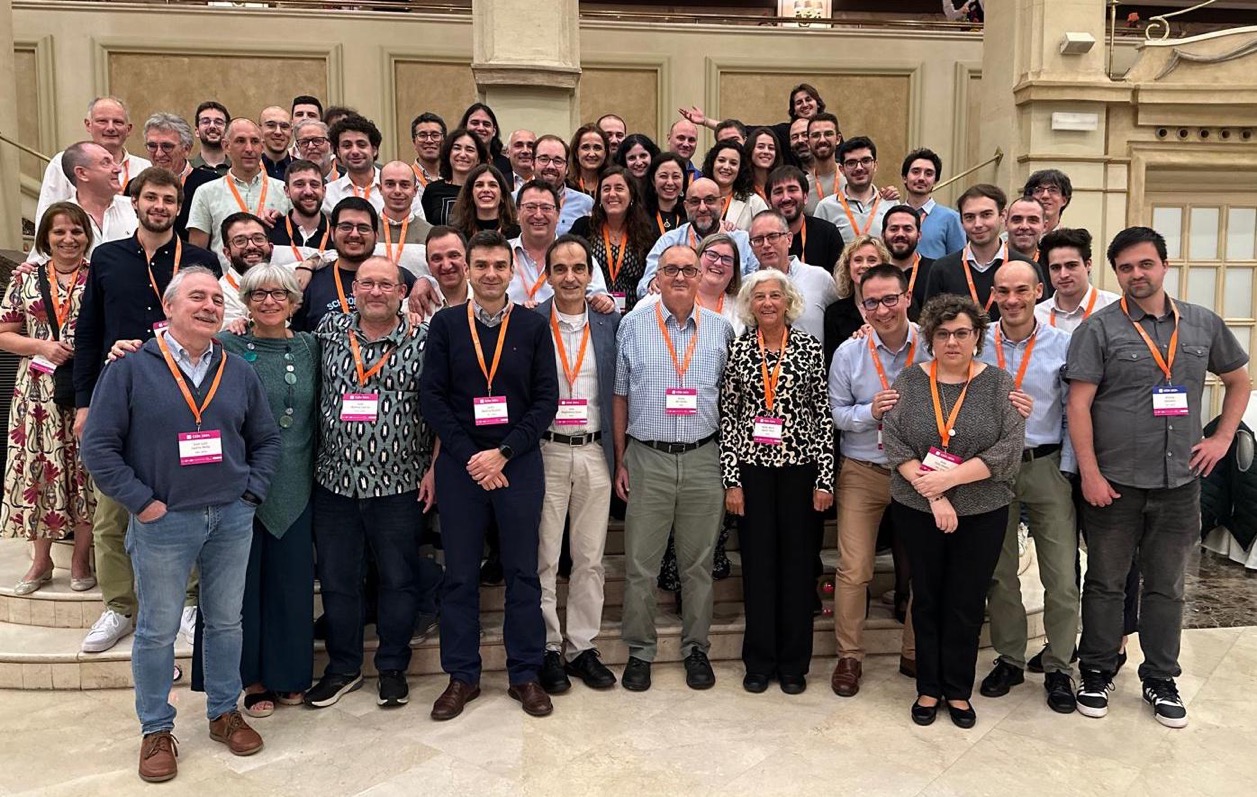
Our group presented three communications:
- F. Pérez-Gámez and C. Bejines. Álgebras de Heyting débiles: una generalización para retículos no distributivos.
- I.P. Cabrera, P. Cordero, E. Muñoz-Velasco and M. Ojeda-Hernández. Estructuras de clausura difusas como puntos fijos de conexiones de Galois.
- N. Madrid and M. Ojeda-Aciego. El f-índice de inclusión como par adjunto óptimo para modus ponens difuso.
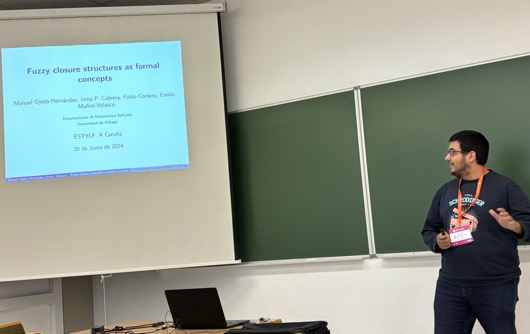
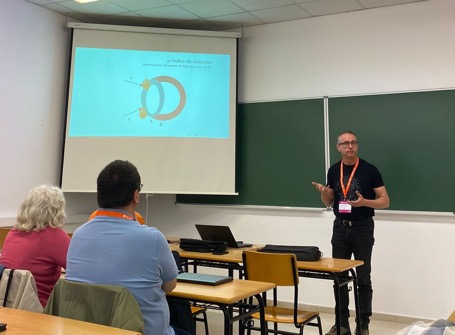
We also participated as co-editors of the proceedings of CAEPIA'24, published by Springer.
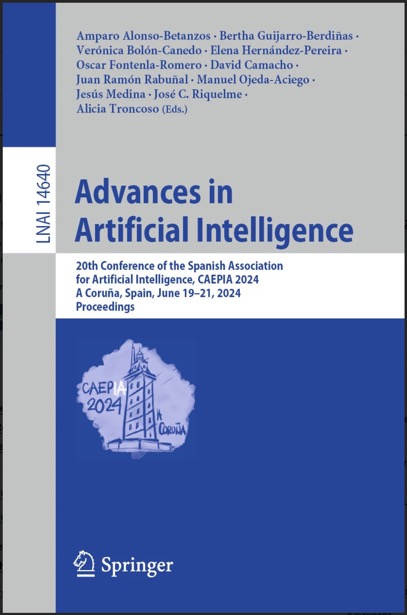
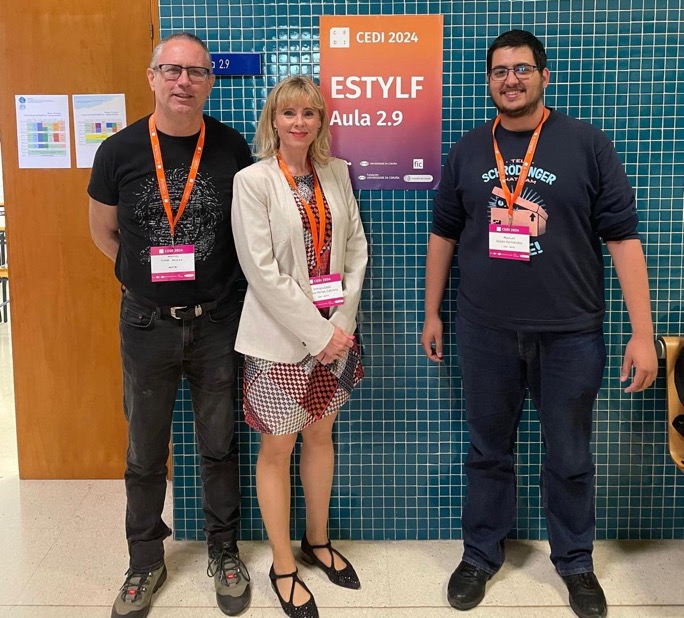
Conference papers accepted: FSTA
30/11/23/13:48 Filed in: Conference papers
O. Krídlo, D. López-Rodríguez, M. Ojeda-Aciego, M. Reformat. An FCA-based approach to RDF graphs. Fuzzy Sets Theory and Applications, FSTA, 2024.
ABSTRACT We investigate building a connection between RDF and FCA. The proposed approach transforms an RDF graph, where vertices represent objects of different types and edges represent relationships between these objects, into a series of bipartite graphs. It is achieved by separating edges representing specific relationships, resulting in a clear representation of the relationship of interest without clutter. To address this issue, we propose a bond-based construction of rigorous and benevolent compositions of bipartite graphs. These bipartite graphs are extracted from RDF graphs and combined—using the proposed construction—with external information related to the graphs' entities.
D. López-Rodríguez, M. Ojeda-Hernández, Á. Mora. Close-by-One strategy for computing the fuzzy concept lattice. Fuzzy Sets Theory and Applications, FSTA, 2024.
ABSTRACT We present the extension of CbO-like algorithms to a native fuzzy environment, without scaling, and combining the advantages of the different algorithms to obtain faster results with less computational load. The soundness of these algorithms is presented together with a comparison with existing strategies to show the improvement in both time, number of intents computed and number of tests performed.
Conference papers accepted EUSFLAT
27/05/25/13:02 Filed in: Conference paper
N. Madrid, M. Ojeda-Aciego. Studying the structure generated by subsets of ƒ-indexes of inclusion.14th Conference of the European Society for Fuzzy Logic and Technology, Riga, 2025.
Key-Work Abstract The ƒ-index of inclusion has proven to be a suitable generalization of the inclusion in the fuzzy setting. In this paper, the properties of the ƒ-index of inclusion, when its definition is restricted to a subset of indexes, are analyzed. The theoretical results obtained in this work are necessary in order to develop fuzzy inference systems based on the ƒ-index of inclusion.
M. Holcapek, N. Cao, R. Valasek, N. Madrid, T. Tichy, D. Nedela. Weighted Quantile Approach to Time Series Forecasting Using Fuzzy-Probabilistic Inference Systems.14th Conference of the European Society for Fuzzy Logic and Technology, Riga, 2025.
Contributed Paper Abstract This talk introduces a novel time series forecasting method based on a fuzzy-probabilistic inference system. The central concept is the use of an IF–THEN rule system, where antecedents are represented by fuzzy sets forming a fuzzy partition of the time domain, and consequents are quantile functions that characterize the conditional distribution of time series values over each antecedent.
M. Ojeda-Hernández, D. López Rodríguez. On direct systems of implications with graded attributes. 14th Conference of the European Society for Fuzzy Logic and Technology, Riga, 2025.
Key-Work Abstract In this paper the problem of defining direct systems of implications in the fuzzy setting is studied. The directness of systems allows a quick computation of the closure operator in cases such as Fuzzy Formal Concept Analysis. Characterizing these properties in algebraic terms is deeply linked to Simplification Logic. After the theoretical results, some thoughts on algorithms to provide direct systems are also considered.
I.P. Cabrera, P. Cordero, B. De Baets, E. Muñoz-Velasco, M. Ojeda-Hernández. Kernel operators on trellises. 14th Conference of the European Society for Fuzzy Logic and Technology, Riga, 2025.
Contributed Paper Abstract In this work, we focus on interesting mathematical structures that are less known than lattices, namely the class of pseudo-ordered set, and in particular the subclass of trellises. We address the study of kernel operators and their counterparts, closure operators, within the general framework of pseudo-ordered sets and trellises. We also explore Galois connections which are intimately linked to those notions.
Key-Work Abstract The ƒ-index of inclusion has proven to be a suitable generalization of the inclusion in the fuzzy setting. In this paper, the properties of the ƒ-index of inclusion, when its definition is restricted to a subset of indexes, are analyzed. The theoretical results obtained in this work are necessary in order to develop fuzzy inference systems based on the ƒ-index of inclusion.
M. Holcapek, N. Cao, R. Valasek, N. Madrid, T. Tichy, D. Nedela. Weighted Quantile Approach to Time Series Forecasting Using Fuzzy-Probabilistic Inference Systems.14th Conference of the European Society for Fuzzy Logic and Technology, Riga, 2025.
Contributed Paper Abstract This talk introduces a novel time series forecasting method based on a fuzzy-probabilistic inference system. The central concept is the use of an IF–THEN rule system, where antecedents are represented by fuzzy sets forming a fuzzy partition of the time domain, and consequents are quantile functions that characterize the conditional distribution of time series values over each antecedent.
M. Ojeda-Hernández, D. López Rodríguez. On direct systems of implications with graded attributes. 14th Conference of the European Society for Fuzzy Logic and Technology, Riga, 2025.
Key-Work Abstract In this paper the problem of defining direct systems of implications in the fuzzy setting is studied. The directness of systems allows a quick computation of the closure operator in cases such as Fuzzy Formal Concept Analysis. Characterizing these properties in algebraic terms is deeply linked to Simplification Logic. After the theoretical results, some thoughts on algorithms to provide direct systems are also considered.
I.P. Cabrera, P. Cordero, B. De Baets, E. Muñoz-Velasco, M. Ojeda-Hernández. Kernel operators on trellises. 14th Conference of the European Society for Fuzzy Logic and Technology, Riga, 2025.
Contributed Paper Abstract In this work, we focus on interesting mathematical structures that are less known than lattices, namely the class of pseudo-ordered set, and in particular the subclass of trellises. We address the study of kernel operators and their counterparts, closure operators, within the general framework of pseudo-ordered sets and trellises. We also explore Galois connections which are intimately linked to those notions.
Journal paper accepted: Mathematics
13/02/24/10:27 Filed in: Journal paper
C. Bejines, M. Ojeda-Hernández, D. López-Rodríguez. Analysis of fuzzy vector spaces as an algebraic framework for flag codes. Mathematics. 2024
ABSTRACT Flag codes are a recent network coding strategy based on linear algebra. Fuzzy vector subspaces extend the notions of classical linear algebra. They can be seen as abstractions of flags to the point that several fuzzy vector subspaces can be identified to the same flag, which naturally induces an equivalence relation on the set of fuzzy vector subspaces. The main contributions of this work are the methodological abstraction of flags and flag codes in terms of fuzzy vector subspaces, as well as the generalisation of three distinct equivalence relations that originated from the fuzzy subgroup theory and study of their connection with flag codes, computing the number of equivalence classes in the discrete case, which represent the number of essentially distinct flags, and a comprehensive analysis of such relations and the properties of the corresponding quotient sets.
Intl Seminar Participation
04/12/24/21:00 Filed in: seminar
M. Ojeda-Aciego. On the ƒ-index of inclusion: what is it? what is it good for? Seminar of AI of the Mathematical Institute of the Serbian Academy of Sciences and Arts .
We had the pleasure to participate at the Artificial Intelligence Seminar of the Mathematical Institute of the Serbian Academy of Sciences and Arts.
A number of interesting lines for further research were raised in the discussion following the presentation.
Thanks to Andreja Tepavcevic for the invitation.
ABSTRACT
The notion of inclusion is a cornerstone of set theory and therefore its generalisation in fuzzy set theory is of great interest. The functional degree (or φ-degree) of inclusion is defined to represent the degree of inclusion between two L-fuzzy sets in terms of a mapping that determines the minimal modifications required in one L-fuzzy set to be included in another in the sense of Zadeh. Thus, this notion differs from others existing in the literature because the φ-degree of inclusion is considered as a mapping instead of a value in the unit interval. We show that the φ-degree of inclusion satisfies versions of many common axioms usually required for inclusion measures in the literature.
Considering the relationship between fuzzy entropy and Young's axioms for measures of inclusion, we also present a measure of entropy based on the φ-degree of inclusion that is consistent with the axioms of De Luca and Termini. We then further study the properties of the φ-degree of inclusion and show that, given a fixed pair of fuzzy sets, their φ-degree of inclusion can be linked to a fuzzy conjunction that is part of an adjoint pair. We also show that when this pair is used as the underlying structure to provide a fuzzy interpretation of the modus ponens inference rule, it provides the maximum possible truth value in the conclusion among all those values obtained by fuzzy modus ponens using any other possible adjoint pair. Finally, we will focus on current work on the integration of the φ-degree of inclusion with FCA.
We had the pleasure to participate at the Artificial Intelligence Seminar of the Mathematical Institute of the Serbian Academy of Sciences and Arts.
A number of interesting lines for further research were raised in the discussion following the presentation.
Thanks to Andreja Tepavcevic for the invitation.
ABSTRACT
The notion of inclusion is a cornerstone of set theory and therefore its generalisation in fuzzy set theory is of great interest. The functional degree (or φ-degree) of inclusion is defined to represent the degree of inclusion between two L-fuzzy sets in terms of a mapping that determines the minimal modifications required in one L-fuzzy set to be included in another in the sense of Zadeh. Thus, this notion differs from others existing in the literature because the φ-degree of inclusion is considered as a mapping instead of a value in the unit interval. We show that the φ-degree of inclusion satisfies versions of many common axioms usually required for inclusion measures in the literature.
Considering the relationship between fuzzy entropy and Young's axioms for measures of inclusion, we also present a measure of entropy based on the φ-degree of inclusion that is consistent with the axioms of De Luca and Termini. We then further study the properties of the φ-degree of inclusion and show that, given a fixed pair of fuzzy sets, their φ-degree of inclusion can be linked to a fuzzy conjunction that is part of an adjoint pair. We also show that when this pair is used as the underlying structure to provide a fuzzy interpretation of the modus ponens inference rule, it provides the maximum possible truth value in the conclusion among all those values obtained by fuzzy modus ponens using any other possible adjoint pair. Finally, we will focus on current work on the integration of the φ-degree of inclusion with FCA.
Journal paper accepted: MATHS
01/01/25/10:47 Filed in: Journal paper
D. López-Rodríguez, M. Ojeda-Hernández, and C. Bejines. New Simplification Rules for Databases with Positive and Negative Attributes. Mathematics 13.2 (2025). ABSTRACT In this paper, new logical equivalences are presented within the simplification logic with mixed attributes paradigm, which allow the obtention of bases of shorter, easier-to-read attribute implications. In addition to the theoretical results which show that the proposed equivalences indeed hold in simplification logic with mixed attributes, experimental results which showcase the effectiveness of this method are also provided. Furthermore, the simplification method presented is iterative and gives sufficiently good results in only one or two iterations, therefore presenting itself as a reasonable procedure in time-sensitive experiments.
Participation HARMONIC'23
22/10/23/10:14 Filed in: Workshop participation
Fuzzy Formal Tools for Non Canonical Reasoning (HARMONIC), Osuna, October 19-22, 2023
Herramientas Difusas Para el Razonamiento No Canónico (HARMONIC) was the original name of the workshop, which is now turn into international.
It was held in the very nice village of Osuna (Seville).
Our group presented the findings in the three different research lines below:
* Manuel Ojeda-Aciego: Formal context-based approach to expand RDF data.
* Carlos Bejines: Aggregation Functions on Fuzzy Vector Spaces..
* Manuel Ojeda-Hernández: Quasi closed elements via closure systems.
Journal paper accepted MATHS
19/12/25/10:16 Filed in: Journal paper
F. Valverde-Albacete, C. Peláez-Moreno, I.P. Cabrera, P. Cordero, M. Ojeda-Aciego. Formal Context Transforms and their Affordances for Exploratory Data Analysis. Mathematics , 2025. To appear
ABSTRACT Consider a formal context (G, M, I) as the basic mechanism to capture information about a set G of objects, a set M of attributes and the relation I ∈ G × M between them. Traditional use of Formal Concept Analysis has some shortcomings in its information-eliciting capabilities, which were expanded by the related processes of Formal Independence Analysis and Formal Equivalence Analysis, which analyse different information types. The core of these three approaches can be seen as different instantiations of a theorem by Birkhoff when applied to different concept-forming operators (technically, some types of Galois connection). In this paper, we propose the notion of context transform as a way to elicit new information types from contexts that we call information qualia. We apply this notion of context transform to explain how we may expect other formal analyses of different information qualia to arise from a formal context. We also use the concept of formal quale across the board to provide the affordances of many of the choices needed for practitioners to make effective use of data analysis techniques.
Participation WoFTU'24
12/02/24/13:00 Filed in: Workshop participation
Workshop on Formal Treatment of Uncertainty in Knowledge-Based Systems, Cádiz, February 8-11, 2024
This workshop is focused on creating synergies between academia, industry and third party partners to promote new challenges and projects in the framework of uncertainty in Artificial Intelligence.
We participated with two contributions and one tutorial:
Tutorial: Domingo López. fcaR, Formal Concept Analysis with R.
* Carlos Bejines: Aggregation Functions for uncertainty management.
* Domingo López: Concept lattice-based polarity analysis in texts.
* Manuel Ojeda-Aciego: f-inclusion for the design of deductive automatic systems.
Participation ESCIM'25
26/05/25/11:21 Filed in: Conference participation
European Symposium on Computational Intelligence and Mathematics, ESCIM, Coruña, Spain, May 18-21, 2025
A well-attended conference in which our team presented two keyworks and one position paper. The titles of the talks were "Composition as a fuzzy conjunction between indexes of inclusion", "New simplification rules for databases with positive and negative attributes" and "Unfiltered Large Language Models: Forensic and Legal Challenges of their Criminal Use on the Dark Web: a preliminary study".
We had the opportunity to meet again a number of colleagues, Vilém Novák, Vladik Kreinovich, László Koczy, Francesc Esteva, Juan Moreno, and Jesús Medina among others, in order to discuss prospects of future work or continue the existing ones. In the picture, our team members and after de gala dinner with Irina Perfilieva (external member) and Vilém Novák.
